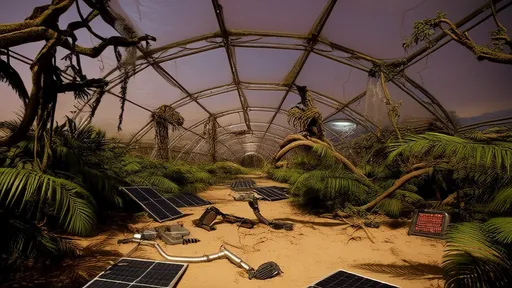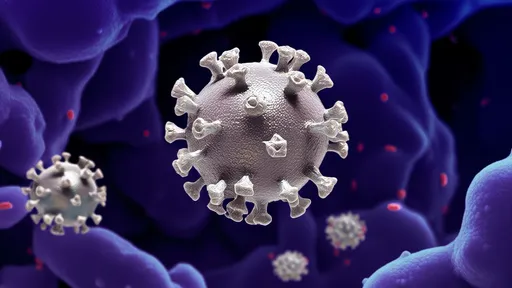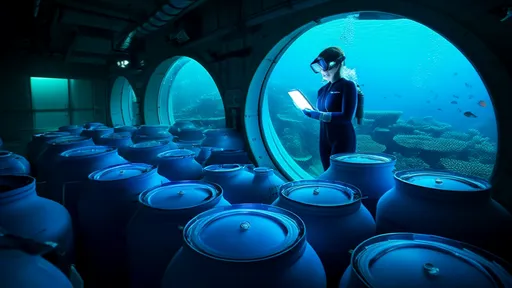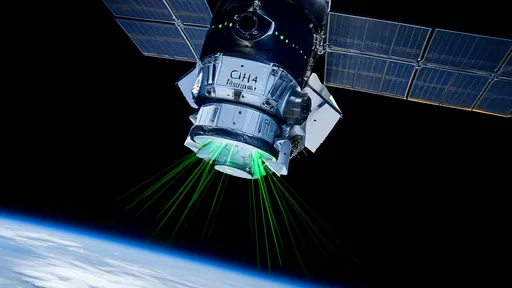The scientific community stands at the brink of a revolutionary new understanding of human biology as the ambitious Human Cell Atlas initiative progresses toward its goal of mapping every cell type in the human body. This monumental international collaboration, often compared to a "Google Maps" for human cells, promises to transform our fundamental knowledge of health and disease by creating comprehensive reference maps of all human cells.
Launched in 2016 by a consortium of leading scientists from across the globe, the Human Cell Atlas represents one of the most complex biological mapping projects ever undertaken. The scale of this endeavor becomes clear when considering that an adult human body contains approximately 37 trillion cells, each with its own molecular signature and functional role. Unlike previous efforts that treated tissues as uniform entities, this project recognizes the incredible diversity hidden within what appears homogeneous to the naked eye.
Recent advances in single-cell genomics have made this ambitious project possible. The ability to isolate individual cells and analyze their complete molecular profiles - including full transcriptomes, epigenomes, and proteomes - has opened new windows into cellular diversity that were unimaginable just a decade ago. Cutting-edge technologies like droplet-based single-cell RNA sequencing now allow researchers to process thousands of cells simultaneously, generating vast datasets that reveal previously unknown cell types and states.
The implications for medicine could be profound. By establishing a baseline "map" of healthy human cells across all tissues and organs, scientists will gain an unprecedented framework for understanding how cellular changes lead to disease. Cancer researchers, for instance, anticipate being able to pinpoint exactly which cells undergo malignant transformation and how their molecular profiles differ from healthy counterparts. Similarly, immunologists hope to decode the complete repertoire of immune cells and their functional states in both health and disease.
One of the most surprising early findings from the Human Cell Atlas has been the discovery of numerous previously unknown cell types. Even in well-studied organs like the brain and heart, researchers have identified specialized cell populations that had escaped detection using traditional methods. The lung alone was found to contain over 40 distinct cell types, including rare populations that may play crucial roles in respiratory diseases. These discoveries underscore how much remains to be learned about even our most basic biology.
The project takes a deliberately comprehensive approach, aiming to capture cellular variation across different demographics. Researchers are collecting samples from donors of various ages, ethnic backgrounds, and sexes to ensure the atlas reflects human diversity rather than presenting a narrow view of cellular biology. This inclusive strategy may help explain why certain diseases affect particular populations differently and could lead to more personalized medical approaches.
Data integration poses one of the greatest challenges for the initiative. With hundreds of laboratories worldwide contributing information, developing standardized protocols and analysis frameworks has been essential. The consortium has established rigorous quality control measures and data processing pipelines to ensure consistency across studies. All data eventually flows into centralized repositories where it undergoes harmonization before being made freely available to the global research community.
Ethical considerations have been central to the project's planning. The handling of sensitive genetic information from human donors requires careful protocols to protect privacy while enabling scientific progress. The initiative has implemented strict governance policies regarding data access and use, with particular attention to preventing potential misuse of genetic data. These safeguards aim to maintain public trust while advancing open science principles.
As the first major releases of atlas data become available, early adopters are already demonstrating its transformative potential. In one notable example, researchers used preliminary immune cell data to identify a rare population of inflammatory cells that appears to drive severe cases of COVID-19. This finding helped explain why some patients develop dangerous cytokine storms while others experience mild symptoms, potentially pointing toward more targeted treatments.
The long-term vision extends far beyond a static catalog of cell types. The ultimate goal is a dynamic, multidimensional atlas that shows how cells change during development, respond to environmental stimuli, and transition between healthy and diseased states. Future versions may incorporate spatial information showing exactly where each cell type resides within tissues, along with detailed maps of cellular communication networks.
Funding this decades-long effort requires sustained international commitment. While initial support came primarily from research foundations and philanthropic organizations, governments worldwide are increasingly recognizing the project's strategic importance. Several countries have launched national cell atlas programs that both contribute to and benefit from the global initiative, creating a distributed network of expertise and resources.
For the broader scientific community, the Human Cell Atlas represents both an invaluable resource and a new way of approaching biological research. The shift from studying bulk tissues to analyzing individual cells parallels the revolution sparked by the Human Genome Project, but at an even finer scale of resolution. As the data grows more comprehensive, researchers across disciplines - from basic cell biology to pharmaceutical development - will find new ways to apply this foundational knowledge.
Educational institutions are already incorporating Human Cell Atlas concepts into their curricula, training the next generation of scientists to think in terms of cellular ecosystems rather than isolated components. This paradigm shift may prove as significant as the introduction of molecular biology techniques in the late 20th century, potentially leading to entirely new fields of cellular systems medicine.
The road ahead remains long, with current estimates suggesting the first complete draft atlas may take until 2030 or beyond. Yet even incomplete versions are proving their worth, helping researchers make discoveries that would have been impossible without this coordinated effort. As the project advances, it continues to demonstrate how large-scale collaborative science can accelerate progress beyond what any single laboratory or institution could achieve alone.
Looking forward, the Human Cell Atlas may well become one of the most frequently consulted resources in biological research, serving as both foundation and inspiration for countless future studies. Its true impact will likely extend far beyond what its founders envisioned, much as the Human Genome Project's applications have surpassed initial expectations. In mapping our cellular universe, scientists are not merely creating a reference work - they're writing a new chapter in humanity's understanding of itself.

By /Jul 2, 2025

By /Jul 2, 2025

By /Jul 2, 2025

By /Jul 2, 2025

By /Jul 2, 2025

By /Jul 2, 2025

By /Jul 2, 2025

By /Jul 2, 2025

By /Jul 2, 2025

By /Jul 2, 2025

By /Jul 2, 2025

By /Jul 2, 2025

By /Jul 2, 2025

By /Jul 2, 2025

By /Jul 2, 2025

By /Jul 2, 2025

By /Jul 2, 2025